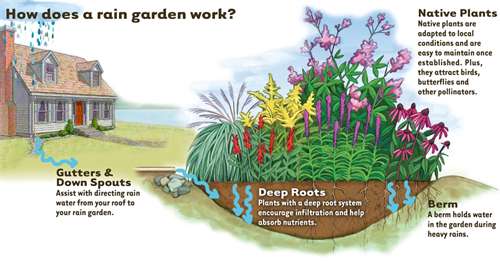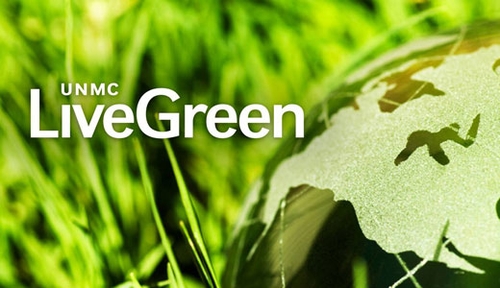 |
Storm water runoff carries pollutants in the form of sediments, chemicals, oil and gasoline through the storm sewers directly into our waterways. How can we stop it? How can we use it?
Rain barrels
About 0.3 inches of rainfall from the average home roof will fill a rain barrel. The water can then be used for a variety of purposes: refilling a water feature or watering the garden with clean, soft, chlorine-free rain water.
Request a free rain barrel and learn how to set it up here. While the rain barrel is free, you will need to visit a hardware store for the materials to make it functional. Full instructions are on the website.
Rain gardens
Another option is to put in a rain garden. (Click here to see a wonderful interactive illustration of a rain garden by the UNL Extension Office.) Rain gardens capture runoff from the roof, driveway, and other impervious surfaces in the landscape, filtering out pollutants as they replenish groundwater. Rain gardens absorb runoff 30 to 40 percent more efficiently than a standard lawn, add beauty, and draw birds, butterflies and beneficial insects to your yard. And who doesn’t want to mow less lawn? If you have a large area to drain, you may want more than one rain garden to handle the runoff.
Rain gardens contain native plants that can withstand both wet feet and dry spells, with deep roots that increase the permeability of the soil. Once established, rain gardens only need some routine maintenance — removing weeds and watering occasionally if there is no rain. And did I mention having less lawn to mow?
The next time it rains, take a look at how your home drains storm water, and see where you might want to put a rain garden. It can be done inexpensively, following directions from the UNL Extension Office. Be sure to locate utilities here before you start to dig.

If you would like to see an example, UNMC has a rain garden on the north side of the Student Life Center, east of the entrance.